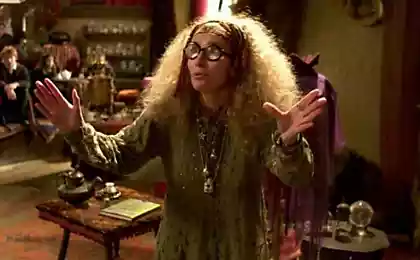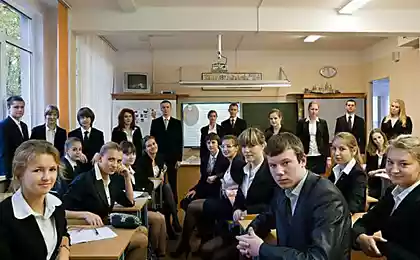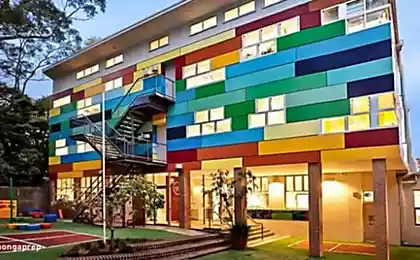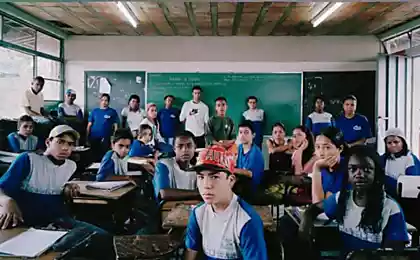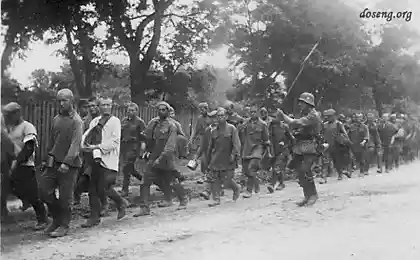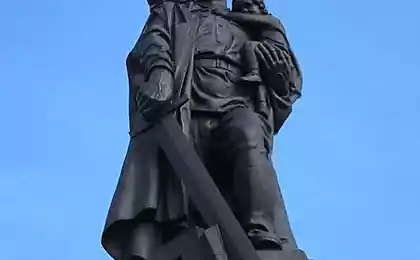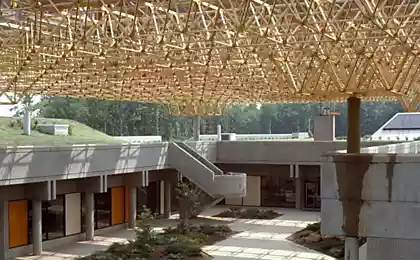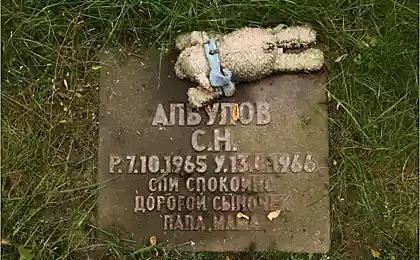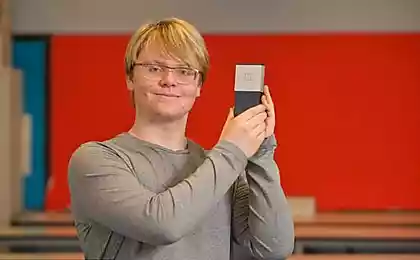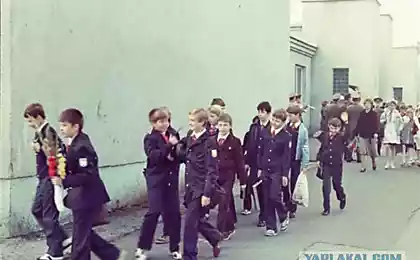4298
Form of Soviet schoolchildren

There are several models. Girls - classic brown dress with black (s) or white (for catering), an apron, tie a bow at the back.
Dresses were modestly decorated with lace collar and cuffs. Wearing collar and cuffs was mandatory.

In addition, the girls could wear black or brown (s) or white (the front) bows. Bows other flowers on the rules is not allowed.

(In general, the form for girls differed little from pre-revolutionary sample). In addition, after the war was introduced separate education from which a few years later, however, refused
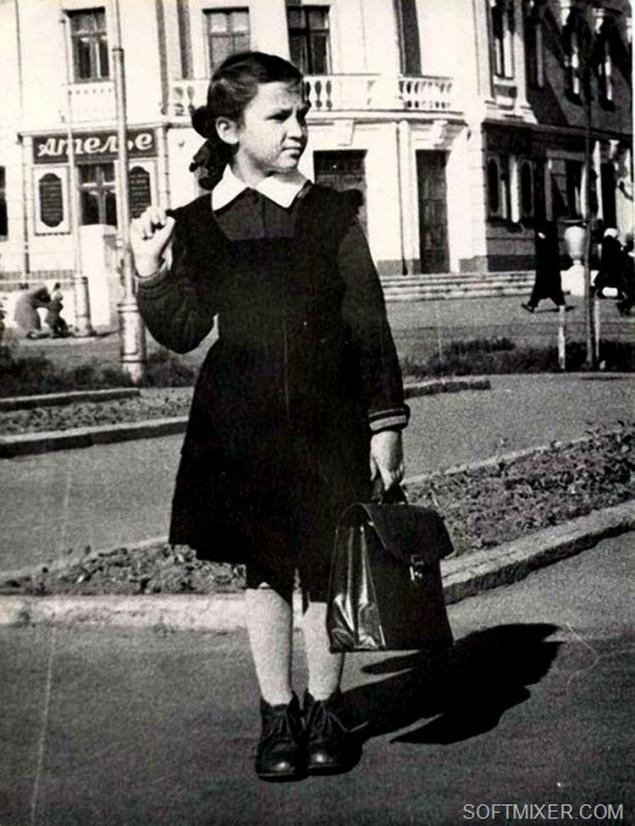
The strictness of morals Stalin era spread, of course, and school life. Most minor experiments with the length or other parameters of school uniforms severely punished school administration.

Even the hairstyle should meet the requirements of the Puritan morality - "model haircuts" to the end of the 50s were strictly prohibited, not to mention the color of the hair. Girls wore braids necessarily with bows.
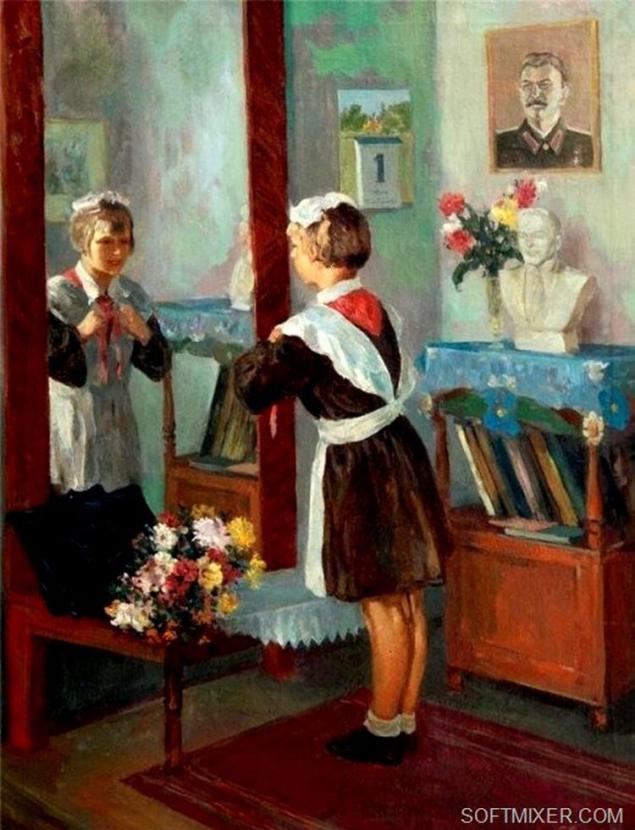
School uniforms Stalin era can be seen in the films "grader", "Alyosha Ptitsyn produces character" and "Vasek Trubachev and his comrades»
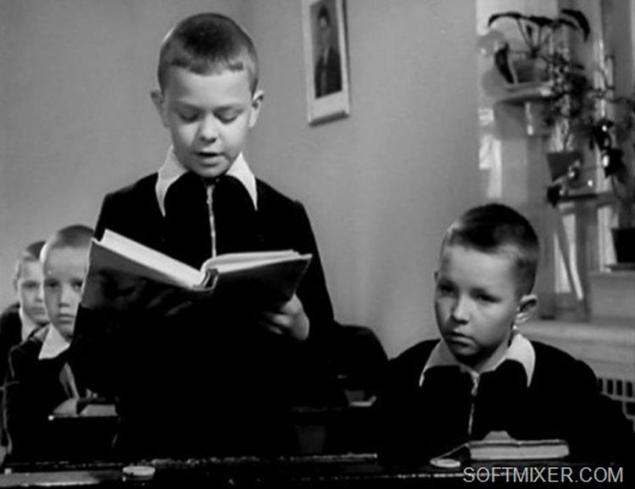
"Warming" mode is not immediately affected the democratization of school uniforms, but it still happened. The style of Soviet school uniform was modernized in 1962, and since then it changes every decade. There were some differences in the various Soviet republics.

Suits for boys made wool. Instead tunic jacket entered. The girls wore brown dresses with black aprons and bows (on special occasions they wore white aprons and bows).

Dresses for girls were almost identical, but aprons are different - and the most simple of cheap fabric, and very beautiful (even black, everyday). Or sewed them, or getting out through connections: with ruffles, tucks, pleated or corrugated wings.
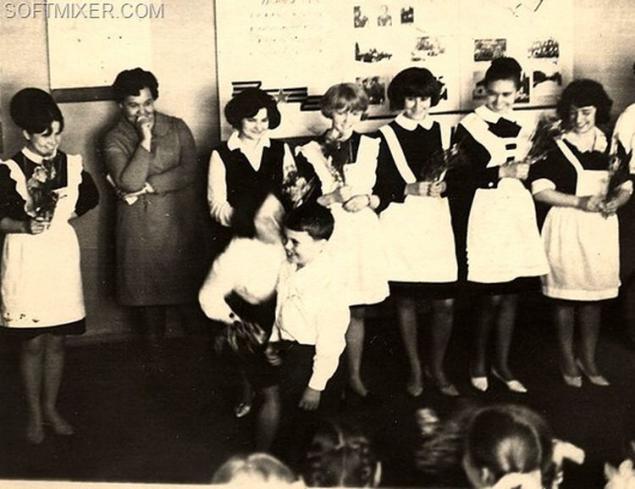
Members of the Pioneer organization, to which belonged almost all students under 14 years of age (age of the Young Communist League), wearing red ties.
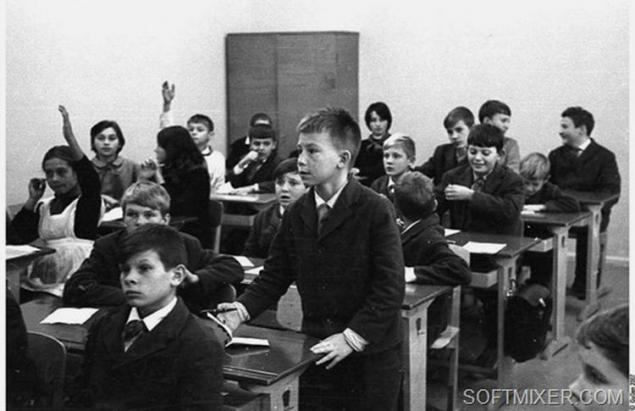
School children of the late 1960s, we can see in the cult film "We'll Live Till Monday».

Since the mid-1970s tailoring forms became more identical to those fashion trends that occurred in the 1960s. However, only the lucky boys. The boys gray wool trousers and jackets were replaced with trousers and jackets-wool fabric blue.
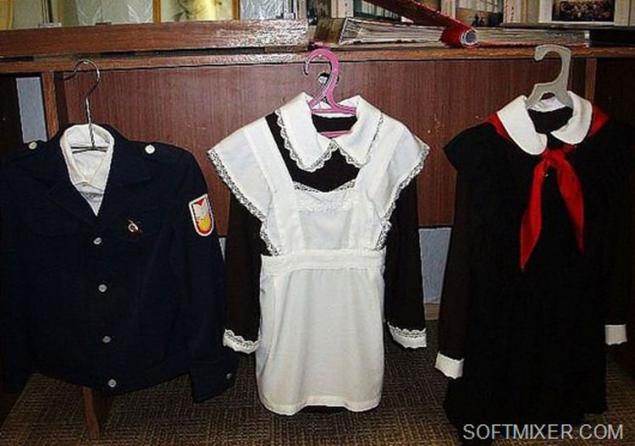
Tailoring jackets reminiscent of the classic denim jacket (the world gathered momentum so-called "Denim»).
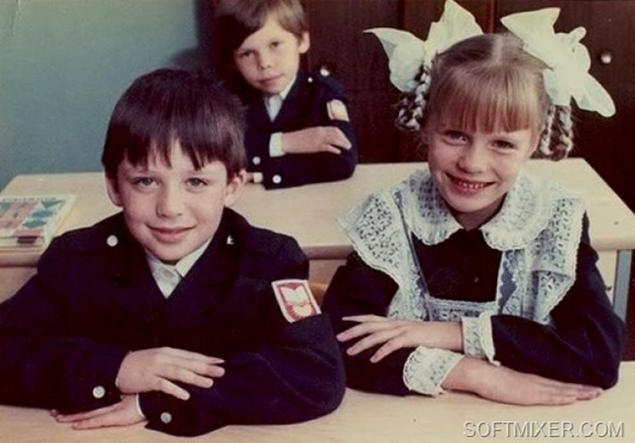
On the side of the sleeve was sewn emblem of soft plastic with a painted open textbooks and the rising sun.

Mandatory addition to the school uniform, depending on the age of the student, were oktyabryatsky (in primary school), Pioneer (in middle school), or Komsomol (in high school) icons. Pioneers were also to be sure to wear pioneer tie.
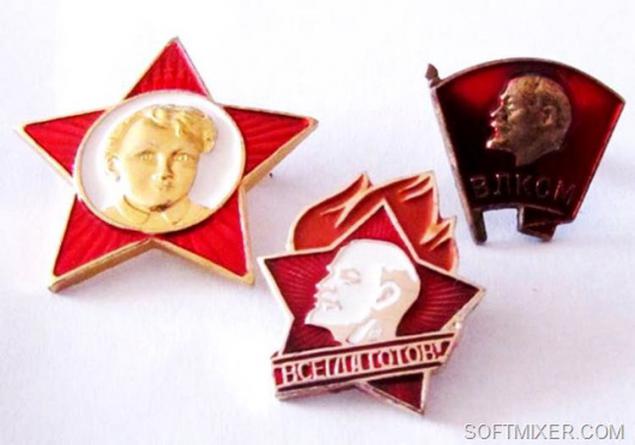
Besides the usual pioneer badge there was a special option for the pioneers who are actively engaged in social work. He was a bit more than usual, and on it was written "For active».
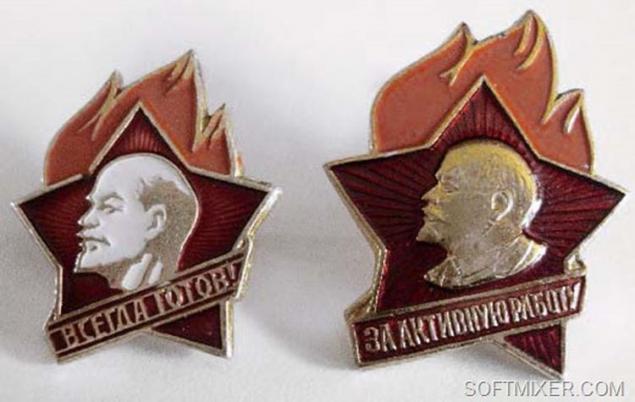
In the early 1980s, was introduced for senior form. (This form began to carry the eighth grade). Girls from first to seventh grade wore a brown dress, as in the previous period. Only it was slightly above the knees.
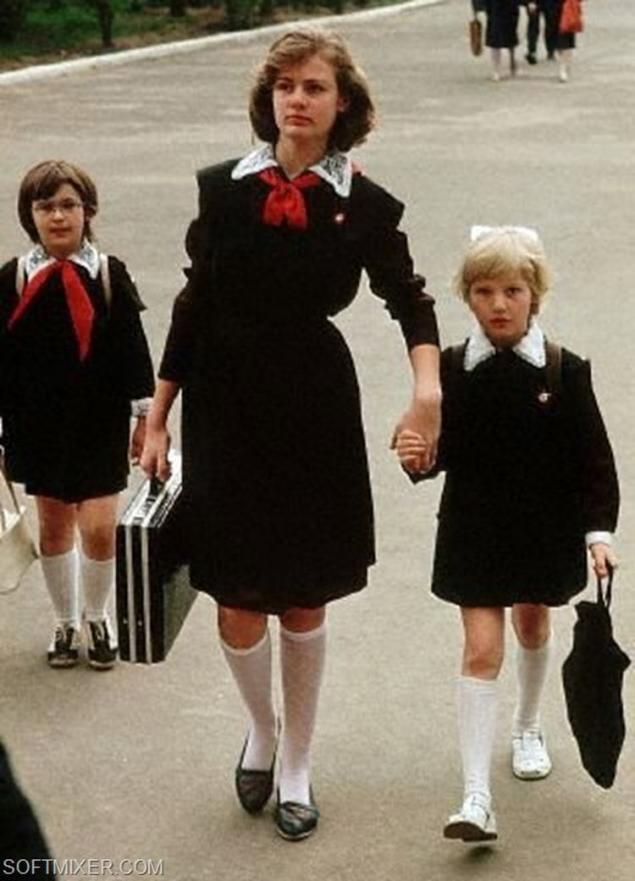
Boys pants and jacket were replaced by a pantsuit. Color fabric was still blue. Also, the blue was the emblem on the sleeve.
Very often cut logo, as it did not look too aesthetically pleasing, especially after some time - the paint on the plastic starts to blur.
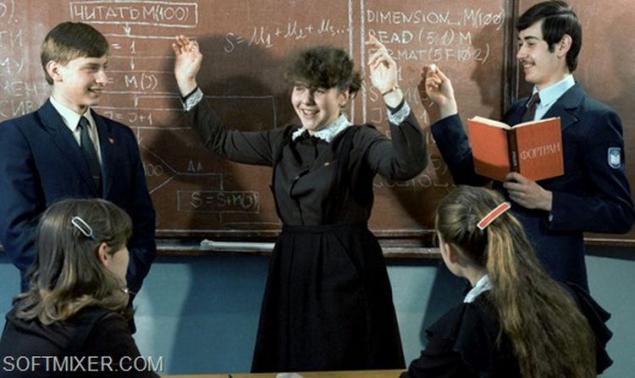
For girls in 1984, was introduced three-piece suit is blue, consisting of skirts with pleats in the front trapeze jacket with pockets and waist. Skirt can be worn with a jacket or, with either a waistcoat, or the entire costume at once. A strict rules on haircuts were loosened.
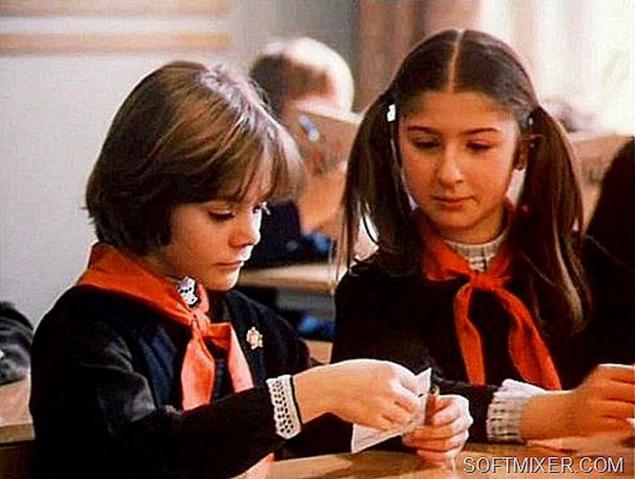
In 1988, for Leningrad, Siberia and the Far North were allowed to wear blue pants in the winter.
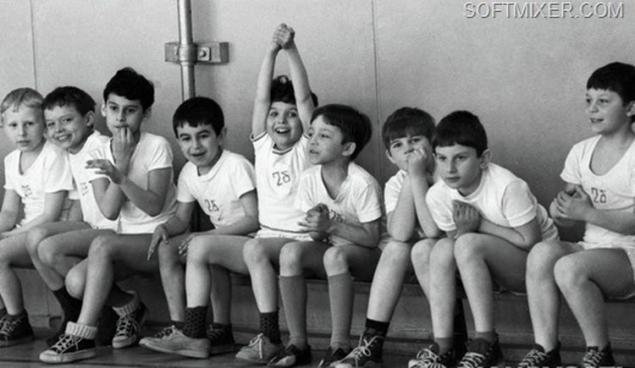
In some Soviet republics style school uniform was slightly different, as well as color. Thus, Ukraine school uniform was brown, though not prohibited and blue.
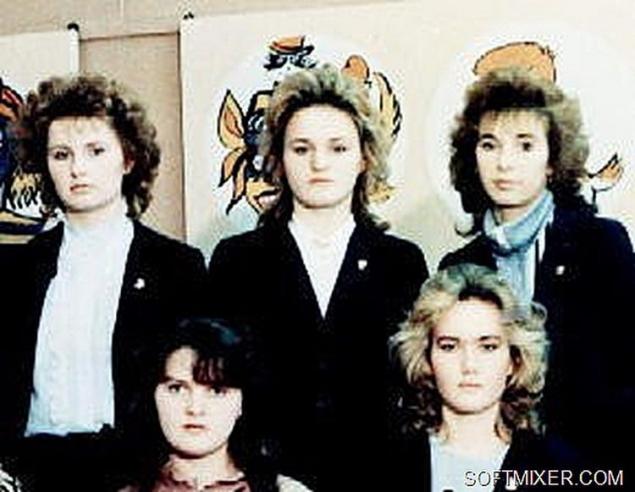
It is this form for girls contributed to the fact that they began to realize early in its appeal. Pleated skirt, vest, and most importantly - blouses with which you can experiment, was converted almost every schoolgirl in "young lady».
In 1992, mandatory school uniforms were abolished. Today in Russia there is no single standard uniforms, but some schools have their own form, which students are required to wear.
Pros uniforms
School uniforms, as well as any form, disciplines, leading to cohesion, promotes development in pupils feeling of community, teamwork, common cause and the presence of common goals.
Form eliminates (or at least limits) the possibility of competition between students (and their parents) in clothing, significantly reduces the visual difference between students from families of different material wealth, preventing delamination on a "rich / poor».
Single standard on the form if it is taken at the state level, ensures that pupils wear will fit sanitary requirements and do not reflect negatively on their health.
If there is a single form, its production can be earmarked to subsidize maintaining low prices and remove the poor families of the burden of the costs of educating children.

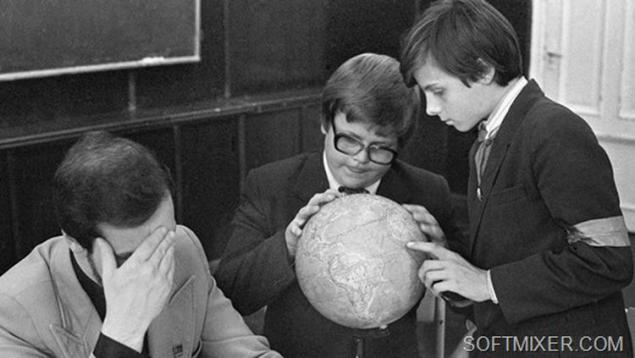
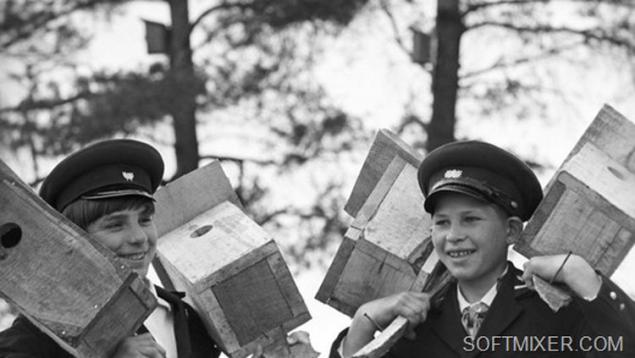
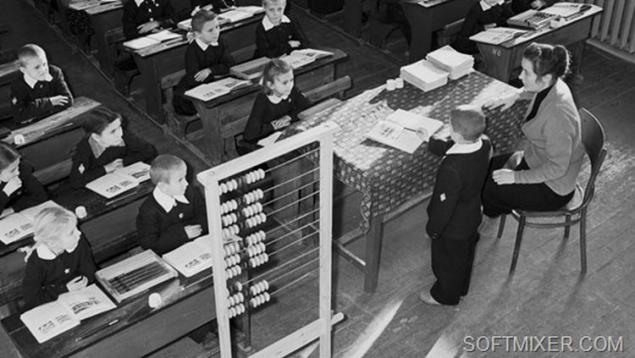


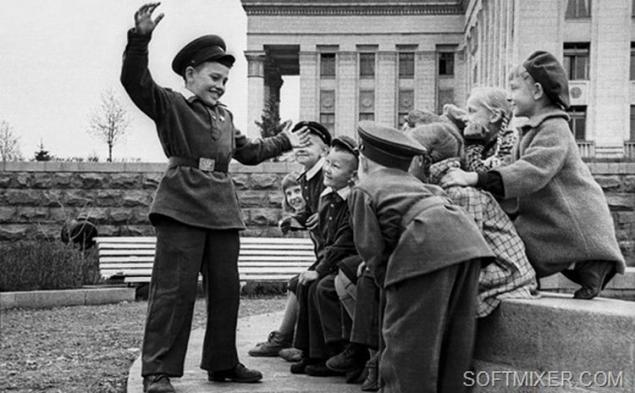
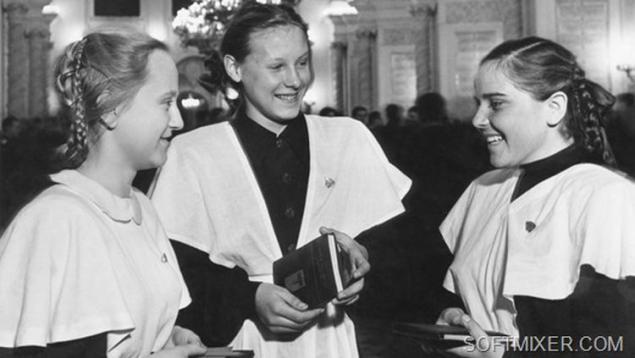
Source: jurashz.livejournal.com
The sum of what is happening in Ukraine on 19.06.2014
In the case of abandoned places very picturesque


